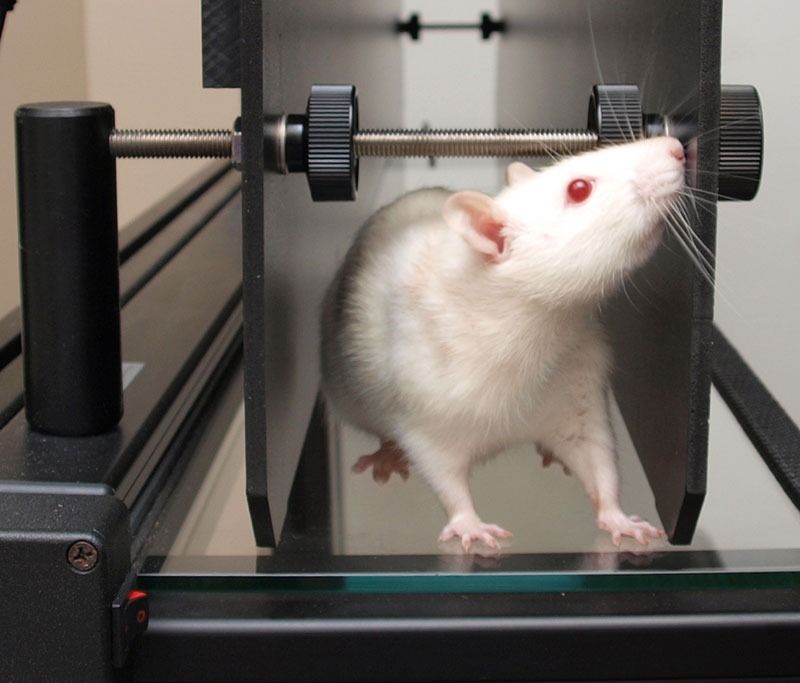Recent applications of locomotor and gait analysis
Stem cell research is a promising area of research for spinal cord injury. With 1,25 million individuals suffering from chronic spinal cord injury in the US alone, new treatment approaches are necessary.
Posted by
Published on
Thu 01 Dec. 2011
Topics
| CatWalk XT | Gait | Gait Analysis | Spinal Cord Injury |

Stem cell research is a promising area of research for spinal cord injury. With 1,250,000 individuals suffering from chronic spinal cord injury in the US alone, new treatment approaches are necessary and research in this area is not slowing down (Salazar, Uchida, Hamers, Cummings, & Anderson, 2010).
Spinal cord injury typically involves the loss of neurons in the spinal column, which depending on the location of the injury can lead to motor deficits or complete paralysis. Stem cell therapies are a promising area of research for treatment, as stem cells might be able to replace lost neurons and recover some or all motor function. However, there is a strong lack of consensus about the types of stem cell therapies that might be useful (Schira et al. 2011). This is partially fuelled by inconsistent functional outcomes in studies investigating different therapeutic strategies.
Functional outcomes can also seem more variable due to different tests being applied to assess the success of a therapy. In addition, only using one behavioral test to assess functional recovery can offer an incomplete view of the results, but it is uncommon for more than one test to be used. In contrast, the research done by Schira et al. uses three behavioral tests, one of which is gait and locomotor assessment using CatWalk™ XT.

The most important tool for the assessment of functional recovery after spinal cord injury in rodents
CatWalk XT provides systematic and extensive automated gait analysis. Measuring a number of dynamic and static gait parameters simultaneously provides a rich insight in functional recovery in response to treatments like stem cell transplantation. Shira et al. showed that stem cells transplanted to the area of injury accumulated within the lesion area, reducing the size of the lesion. Axon regrowth was enhanced, but more importantly, behavioral tasks showed improved locomotor function. Although biologically we can assess whether stem cells seem to be responsive after being translated into the lesioned area, nothing but behavioral testing can evaluate functional recovery.
Ultimately, biological assessments can only hint at what we belief the functional outcome might be. For example, differentiation from umbilical cord-derived stem cells continues to be debated. However, effects from transplanting human umbilical cord blood in spinal cord injury have been supported whether differentiation was observed or not. Whether or not neural differentiation is observed, there could be regeneration through (unknown) mechanisms other than differentiation. This is where behavioral assessment provides most illuminating insights into the viability of therapeutic targets.
Ultimately, the functional outcome is what matters, even if the underlying mechanisms require further study.
References
- Salazar, D. L.; Uchida, N.; Hamers, F. P. T.; Cummings, B. J.; Anderson, A. J. (2010). Human neural stem cells differentiate and promote locomotor recovery in an early chronic spinal cord injury NOD-scid mouse model, PloS one, 5(8), e12272. doi:10.1371/journal.pone.0012272
- Schira, J.; Gasis, M.; Estrada, V.; Hendricks, M.; Schmitz, C.; Trapp, T.; Kruse, F. et al. (2011). Significant clinical, neuropathological and behavioural recovery from acute spinal cord trauma by transplantation of a well-defined somatic stem cell from human umbilical cord blood, Brain: a journal of neurology. doi:10.1093/brain/awr222
Related Posts

Understanding phase dispersion in CatWalk XT

In utero alcohol exposure, the effects on brain and behavior

